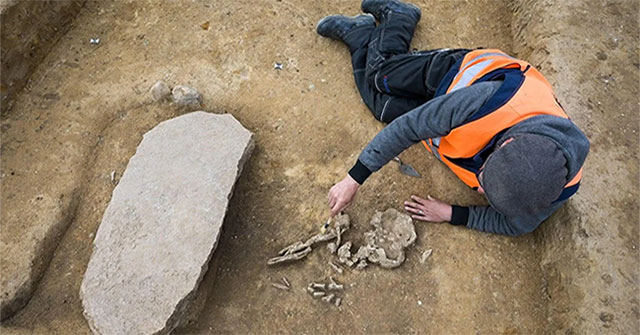
German archaeologists have stumbled upon what they have dubbed a "zombie grave" during an archaeological investigation in preparation for a power grid expansion project.
The Mysterious Grave
According to Heritage Daily, the "zombie grave" dates back 4,200 years to the Bronze Age and contains the remains of a male individual who was between 40 and 60 years old at the time of his death.
The discovery was made by chance when the Saxony-Anhalt State Office for the Preservation of Historical Monuments and Archaeology was tasked with examining the 150-kilometer stretch of land through which the new power line would run. The area is known for its archaeological significance due to its long history of human settlement.
The researchers have labeled the grave a "zombie grave" because of the unusual burial practices employed. A heavy boulder was found weighing down the man's torso, which the researchers believe was intended to prevent him from rising from the grave as a zombie.
Susanne Friederich, the excavation project manager, explained that ancient populations in the region feared the dead returning from the grave as early as the Stone Age.
The Legend of the Zombie
The idea of a walking, animated corpse has been depicted in various cultures, including Celtic and ancient Norse mythology, and in folklore across Europe. These depictions bear a striking resemblance to the modern-day concept of zombies.
During the medieval period, so-called "zombies" were often thought to be suicides, witches, corpses inhabited by evil spirits, or vampires' victims.
The Bell Beaker Culture
The burial practices seen in this particular grave are associated with the Bell Beaker culture, a Bronze Age people who emerged around 2800 BC and spread across much of Western Europe and parts of coastal northwest Africa.
